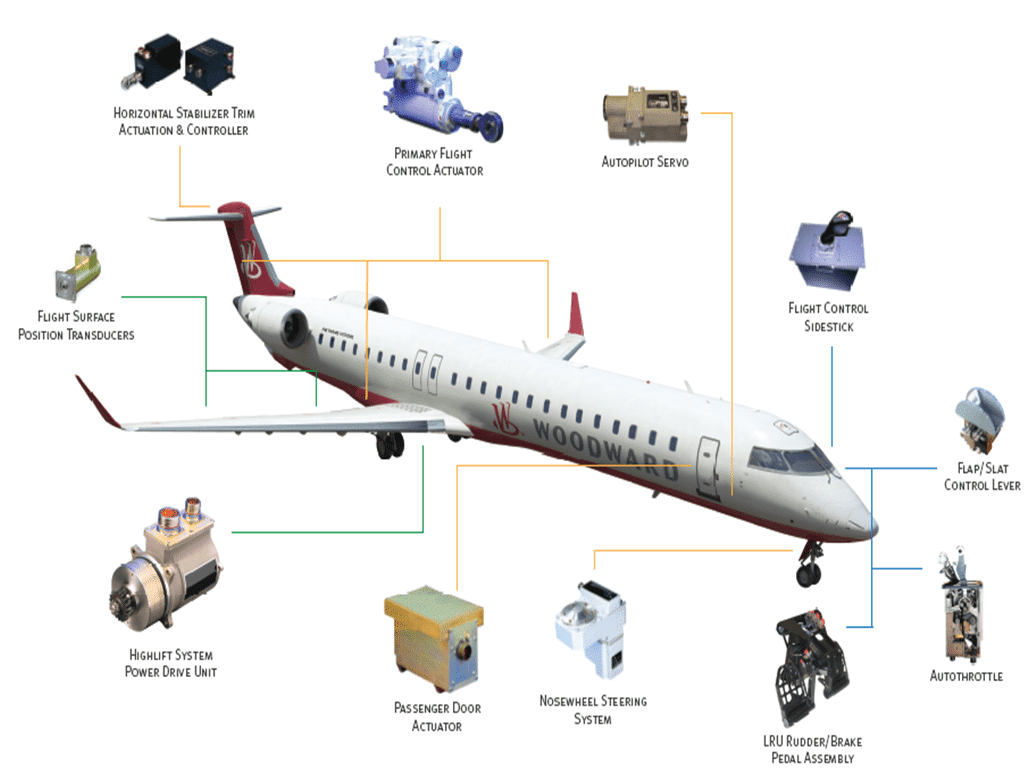Revolutionizing Flight Exploring the Power of Aircraft Electromechanical Components

From the early days of aviation to the present, aircraft technology has continuously evolved, aiming to make air travel safer, more efficient, and more comfortable. One significant aspect of this evolution is the development of aircraft electromechanical components, which have become essential for modern aircraft. These components blend electrical and mechanical systems to provide groundbreaking capabilities that have revolutionized the aviation industry. In this article, we will delve into the world of aircraft electromechanical components, exploring their functionalities, innovations, and the transformative impact they have had on flight.
The Rise of Aircraft Electromechanical Components
- Introduction to Electromechanical Components
Electromechanical components are devices that incorporate electrical and mechanical functionalities, combining the power of both systems to achieve enhanced performance. These components have found extensive use in various industries, and aviation is no exception. The integration of electrical and mechanical systems has paved the way for remarkable advancements in aircraft technology.
- The Importance of Electromechanical Components in Aircraft
Aircraft electromechanical components play a critical role in ensuring the safety, reliability, and efficiency of flight operations. These components provide the backbone for vital systems such as flight controls, landing gear mechanisms, braking systems, and environmental control systems. By harnessing the capabilities of both electrical and mechanical systems, these components offer numerous advantages that significantly improve the overall performance of aircraft.
Innovations in Aircraft Electromechanical Components
- Fly-by-Wire Systems: The Future of Flight Control
Fly-by-wire systems have revolutionized aircraft control by replacing traditional mechanical linkages with electronic interfaces. These systems use electromechanical components to convert pilot inputs into electronic signals, enhancing control precision and responsiveness. Fly-by-wire technology has made aircraft handling more intuitive and adaptable, contributing to improved safety and maneuverability.
- Electric Landing Gear Systems: Reinventing Ground Operations
Traditional landing gear systems have relied on hydraulic mechanisms for decades. However, with the advent of electric landing gear systems, aircraft manufacturers have achieved significant advancements in efficiency, weight reduction, and reliability. Electromechanical components in these systems simplify maintenance, reduce energy consumption, and enhance the overall lifespan of landing gear systems.
- Electric Brake Systems: Paving the Way for Smoother Landings
Braking is a crucial aspect of aircraft operations, especially during landing. Electromechanical brake systems offer superior control and performance compared to traditional hydraulic systems. By utilizing electromechanical components, these systems provide precise modulation of braking force, reduced maintenance requirements, and improved resistance to wear and tear. Electric brake systems contribute to smoother landings, shorter braking distances, and increased safety.
- Advanced Environmental Control Systems: Optimizing Cabin Comfort
Cabin comfort is a top priority for airlines, and advanced environmental control systems powered by electromechanical components have played a significant role in improving passenger experiences. These systems regulate cabin temperature, humidity, and airflow, ensuring a pleasant and comfortable environment throughout the flight. The integration of electromechanical components allows for better control, energy efficiency, and optimized performance.
Enhanced Safety Features and Reliability
- Fault Tolerance and Redundancy
One of the remarkable aspects of aircraft electromechanical components is their inherent fault tolerance and redundancy capabilities. By incorporating redundant systems and multiple sensors, aircraft can detect faults, mitigate risks, and maintain safe operations even in the presence of component failures. These safety features significantly enhance aircraft reliability and passenger safety.
- Health Monitoring and Predictive Maintenance
Electromechanical components enable real-time health monitoring of critical systems, providing valuable data to maintenance crews and operators. Through advanced sensors and diagnostics, these components can detect potential issues and predict maintenance requirements, allowing for proactive maintenance scheduling. This predictive maintenance approach reduces unscheduled downtime, optimizes maintenance costs, and ensures aircraft availability.
The Future of Aircraft Electromechanical Components
- Electrification and Sustainable Aviation
The aviation industry is actively exploring ways to reduce its environmental footprint, and aircraft electrification is a key focus area. Electromechanical components, such as electric motors and power distribution systems, are at the forefront of this transformation. Electric propulsion systems, powered by electromechanical components, promise reduced emissions, quieter operations, and increased energy efficiency, paving the way for sustainable aviation.
- Artificial Intelligence Integration
The integration of artificial intelligence (AI) with aircraft electromechanical components opens up exciting possibilities for autonomous systems and smart decision-making. AI algorithms can analyze vast amounts of data collected by sensors, enabling real-time optimization of flight control, maintenance schedules, and overall aircraft performance. With AI-driven electromechanical components, aircraft can adapt to dynamic environments, enhance safety, and improve efficiency.
Conclusion:
Aircraft electromechanical components have become a cornerstone of modern aviation, propelling the industry towards new horizons of safety, efficiency, and sustainability. The integration of electrical and mechanical systems has unlocked unprecedented capabilities, ranging from advanced flight controls to predictive maintenance. As technology continues to advance, we can expect aircraft electromechanical components to push the boundaries of flight, ensuring a brighter and more innovative future for aviation.
